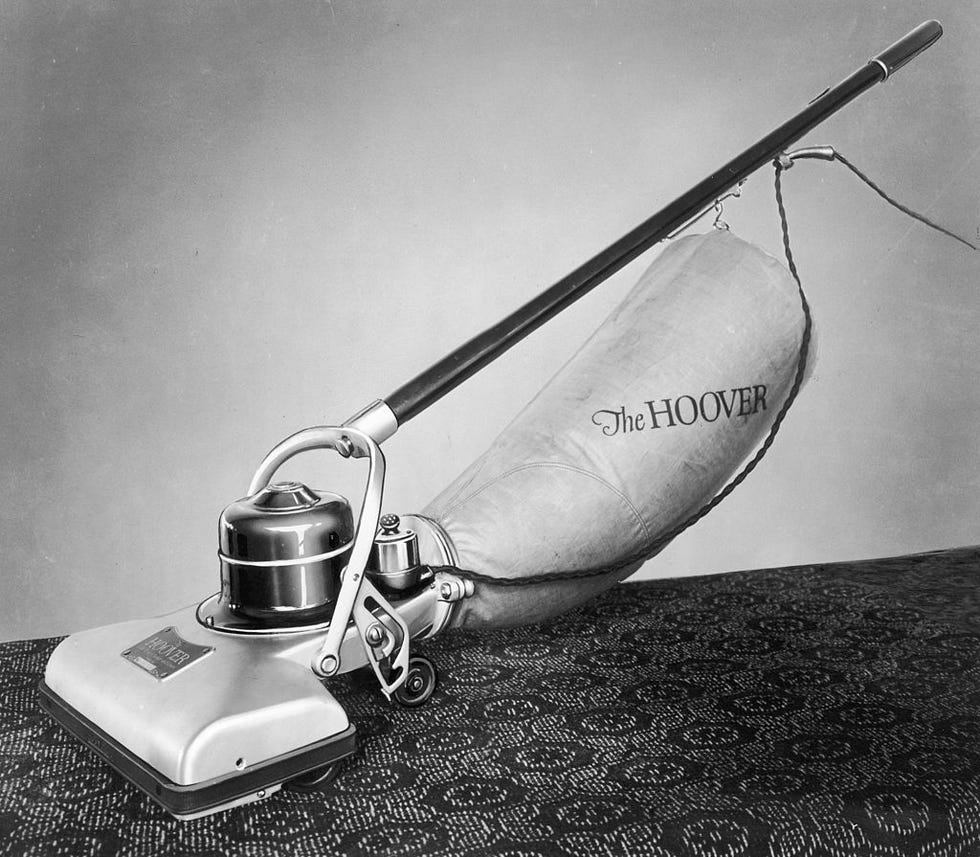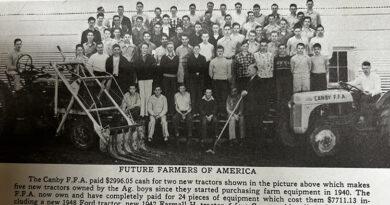History of the Suck: Horse-Drawn Monstrosities To Laser Robotics
History: The Vacuum
By Robert Matsumura, Contributing Writer
Cover Illustration by Shawn M. Schmidt


While the word “housekeeping” may evoke a variety of images in your mind, it’s likely that a vacuum cleaner featured prominently in many of them. So ubiquitous has the vacuum cleaner become in our everyday lives that it’s hard to imagine life without it. Have you ever wondered, however, where this labor-saving machine originated? Who invented it? And how did it develop in the first place?
The first mechanical device for cleaning floors was the “carpet sweeper” which was invented by Daniel Hess in 1860. This early carpet sweeper had a rotating brush and bellows to create suction. In the footsteps of Hess came Ives W. McGaffe, whose 1869 “Whirlwind” featured a belt-driven, hand-powered fan. Toward the end of the 19th century, in 1898, John S. Thurman invented a gasoline-powered cleaner so large and cumbersome that it had to be drawn by a horse, and instead of generating a vacuum, it blew out air like a gigantic blower.
The first vacuum cleaner that operated on the same principles as our contemporary units was constructed by Hubert Cecil Booth of England in 1901. Booth was inspired by a demonstration he attended in London featuring one of Thurman’s machines. As an experiment, Booth placed a handkerchief on the seat of a restaurant chair, placed his mouth to the handkerchief, and sucked hard, drawing air in. When he observed the quantity of dust collected on the handkerchief, he knew his idea had merit. Booth’s original vacuum cleaner ran on an internal combustion engine which powered a piston pump that sucked air through a cloth filter. The entire machine was horse-drawn, and earned the name “Puffing Billy” by the locals. Due to its large size, bringing it indoors was problematic. Puffing Billy operated by inserting its tubes through the windows. Booth’s subsequent model was powered by electricity, but unfortunately, was still too large for individual homeowners and ended up being utilized primarily by cleaning services or installed in the buildings themselves.
The first portable cleaning machine that featured a vacuum was designed by Walter Griffiths in 1905. It employed bellows to suck up dirt and dust via a flexible pipe. Shortly after Griffiths’ machine hit the market, James B. Kirby invented a vacuum machine in 1906 named the “Domestic Cyclone” which incorporated water for dirt separation in lieu of a filter. The first motorized portable vacuum cleaner was developed by James Murray Spangler, a janitor from Canton, Ohio. Spangler’s 1907 machine featured a rotating brush, electric fan, and an innovative box and bag for dust collection. Lacking the funds to mass-produce his invention, Spangler sold the patent to William Henry Hoover in 1908. Hoover reengineered the vacuum cleaner by housing it in a steel box and designing custom attachments for the hose. With the addition of disposal filter bags, Hoover introduced the first upright vacuum cleaner in 1926.

Although the vacuum cleaner was a luxury item at first —initially affordable primarily to the wealthy — following the Second World War and the economic boom of the postwar years, the middle classes could finally afford it, whereby it gradually became a household staple. Today, there are numerous types of vacuum cleaners, many designed for specific applications. While the traditional upright vacuum cleaner is still popular, certain models are available with cyclonic filtration which collects dust through cyclonic separation. Cyclonic technology was originally common to built-in, central vacuum systems, but through the years was adapted for portable units. Cyclonic cleaners do not use filtration bags. Instead, dust is separated in a detachable cylindrical collection bin. Air and dust are sucked at high speed into the collection bin at a direction tangential to the vessel wall, which creates a fast-spinning vortex. The dust particles and other debris migrate to the outside of the bin by centrifugal force where they fall due to gravity. Particularly popular in the UK and Europe are canister models, which feature the motor and dust collector mechanisms on a separate unit (usually mounted on rollers or wheels), which is connected to the vacuum head by a flexible hose. The main advantage to this type of system is flexibility, as the operator can attach different types of heads for various tasks. Also, the hose provides access to hard-to-reach places that an upright model can’t access. For small jobs, lightweight hand-held models powered by rechargeable battery and/or power cords are also commonplace these days.

Another innovation in vacuum cleaner technology is wet/dry models. Wet/dry vacuum cleaners can be used to suck up not only dry debris, but liquids as well. Many models feature an exhaust port that can become a blower by reversing the airflow. Related to the wet/dry vacuum cleaner are the hot water extraction models which can be used to clean fabric materials such as upholstery and carpet.
Last but not least are robotic vacuum cleaners which appeared in the late 1990s and early 2000s. These models move autonomously while collecting dust and debris into a dustbin. The robotic units can typically navigate around furniture and return to a docking station to charge their batteries. Certain models are even able to empty their own dust containers into the dock as well. In December 2009, Neato Robotics introduced the world’s first robotic vacuum cleaner which incorporated a rotating laser-based range-finder (a form of lidar) to scan and map its surroundings. This advanced mapping system empowers the robotic unit to clean the floor methodically, even if the robot must return to its base multiple times for recharging. In many instances it will notice when a previously inaccessible area becomes accessible—such as when a dog or cat wakes from a nap—and return to vacuum that area.
As you can see, we’ve come a long way from gigantic horse-drawn vacuums to autonomously operating robotic cleaners that employ laser technology. The next time you’re toiling away tidying up your house, consider how much more laborious your task would be without the trusty old vacuum cleaner.






